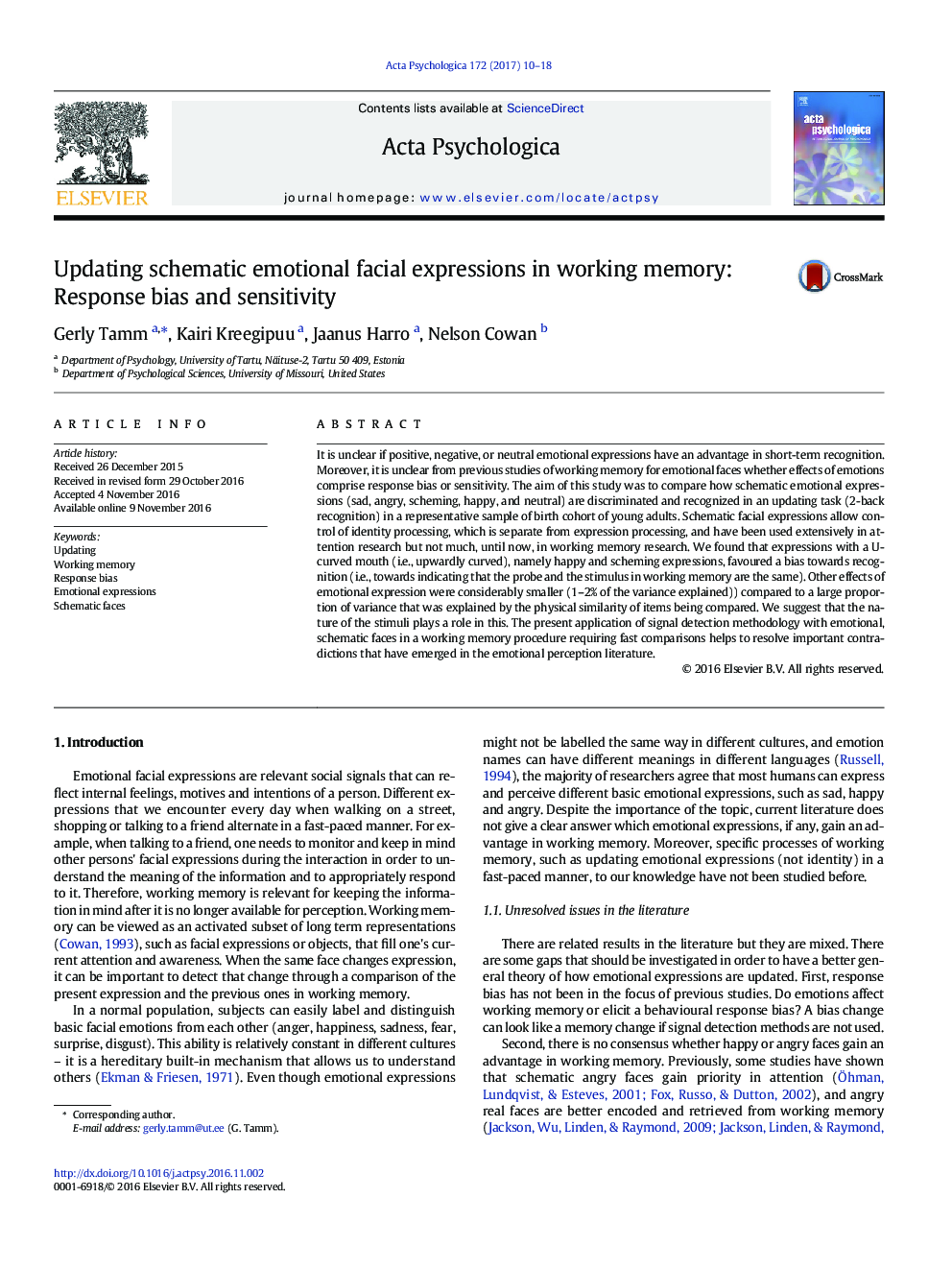| Article ID | Journal | Published Year | Pages | File Type |
|---|---|---|---|---|
| 5040249 | Acta Psychologica | 2017 | 9 Pages |
â¢U-curved smile in schematic faces leads to a liberal response bias in updating.â¢Updating accuracy increases as perceptual differences in facial stimuli increase.â¢Updating speed is not affected by the emotional content of schematic faces.â¢Response bias and sensitivity measures were applied to the 2-back updating data.
It is unclear if positive, negative, or neutral emotional expressions have an advantage in short-term recognition. Moreover, it is unclear from previous studies of working memory for emotional faces whether effects of emotions comprise response bias or sensitivity. The aim of this study was to compare how schematic emotional expressions (sad, angry, scheming, happy, and neutral) are discriminated and recognized in an updating task (2-back recognition) in a representative sample of birth cohort of young adults. Schematic facial expressions allow control of identity processing, which is separate from expression processing, and have been used extensively in attention research but not much, until now, in working memory research. We found that expressions with a U-curved mouth (i.e., upwardly curved), namely happy and scheming expressions, favoured a bias towards recognition (i.e., towards indicating that the probe and the stimulus in working memory are the same). Other effects of emotional expression were considerably smaller (1-2% of the variance explained)) compared to a large proportion of variance that was explained by the physical similarity of items being compared. We suggest that the nature of the stimuli plays a role in this. The present application of signal detection methodology with emotional, schematic faces in a working memory procedure requiring fast comparisons helps to resolve important contradictions that have emerged in the emotional perception literature.
